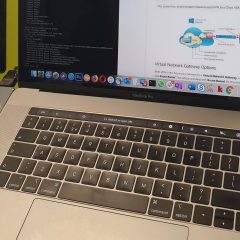EVE-NG Deploying Fortigate v6 Firewalls
KB ID 0001714 Problem The firm I work for are looking at a replacement for Cisco ASA as their preferred firewall of choice. We are looking at Fortinet to fill this gap, but as a product/solution it’s something I know very little about. So the best way to learn is to deploy and play with, and the test bench weapon of choice for discerning technical types is EVE-NG. So can I deploy the newest (v6.4.2 at time of writing) Fortigate...
Deploy Cisco ASA 55xx in Active / Standby Failover
KB ID 0000048 Problem You want to deploy 2 Cisco ASA 55xx Series firewalls in an Active/Standby failover configuration. Solution Assumptions. Hardware on both ASA firewalls is identical. The correct license’s for failover are installed on both firewalls. The same software versions are installed on both firewalls. You have your PRIMARY firewall set up and running correctly (Everything works!). In this example the firewalls were...
Cisco ASA – Allow Remote Management
KB ID 0000173 Problem Quite a while ago I wrote the “Connecting to and managing Cisco firewalls” article, which is still pretty complete, but I’ve been asked on a few occasions, “How do I actually configure the firewall to allow remote administration via, SSH, or HTTPS/ASDM, or Telnet If you have no network connection to the firewall, then you will need to connect via console cable (CLICK HERE). Solution...
PowerShell – Getting Server IP Address Information
KB ID 0001404 Problem I’ve been rebuilding some Hyper-V hosts over the last few weeks, and one thing I learned rebuilding VMware ESX hosts is, ‘make sure you know what all the network cards are doing before you flatten it!’ The same is true of storage as well but here I’m just concentrating on networking. List Network Cards and MAC Addresses If you have these documented you can rename the network card correctly...
ASA Setup FirePOWER Services (for ASDM)
KB ID 0001107 Problem Both the 5506-X (rugged version and wireless), and 5508-X now come with a FirePOWER services module inside them. This can be managed from either ASDM* (with OS and ASDM upgraded to the latest version), and via the FireSIGHT management software/appliance. Related Articles, References, Credits, or External Links *UPDATE: All ASA ‘Next-Gen’ firewalls can now have their Firepower Service Module managed...




